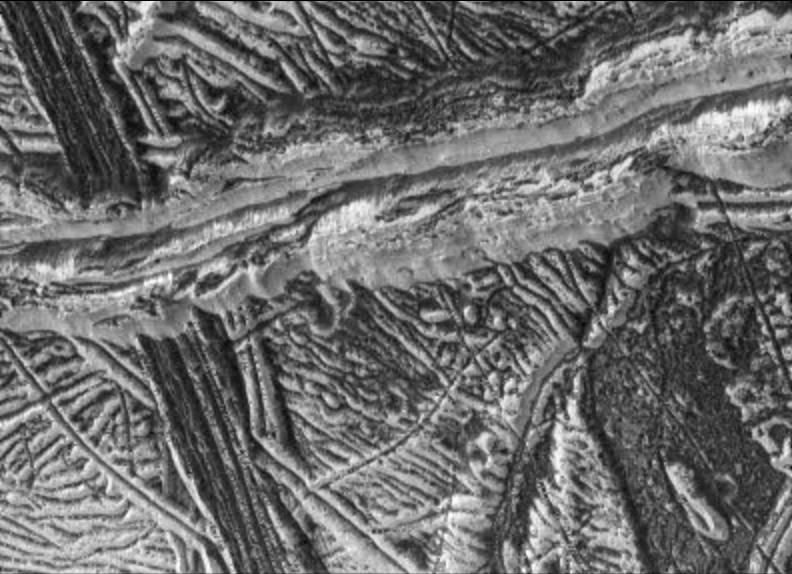All Resources
Dark and Bright Ridges on Europa

This high-resolution image of Jupiter's moon Europa, taken by NASA's Galileo spacecraft camera, shows dark, relatively smooth region at the lower right hand corner of the image which may be a place where warm ice has welled up from below. The region is approximately 11 square miles (30 square kilometers) in area. An isolated bright hill stands within it. The image also shows two prominent ridges which have different characteristics; youngest ridge runs from left to top right and is about 3.1 miles in width (5 kilometers). The ridge has two bright, raised rims and a central valley. The rims of the ridge are rough in texture. The inner and outer walls show bright and dark debris streaming downslope, some of it forming broad fans. This ridge overlies and therefore must be younger than a second ridge running from top to bottom on the left side of the image. This dark ~1.2 mile (2 kilometer) wide ridge is relatively flat, and has smaller-scale ridges and troughs along its length.
North is to the top of the picture, and the sun illuminates the surface from the upper left. This image, centered at approximately 14 degrees south latitude and 194 degrees west longitude, covers an area approximately 9 miles by 12 miles (15 kilometers by 20 kilometers). The resolution is 85 feet (26 meters) per picture element. This image was taken on Dec. 16, 1997 at a range of 800 miles (1300 kilometers) by Galileo's solid state imaging system.


